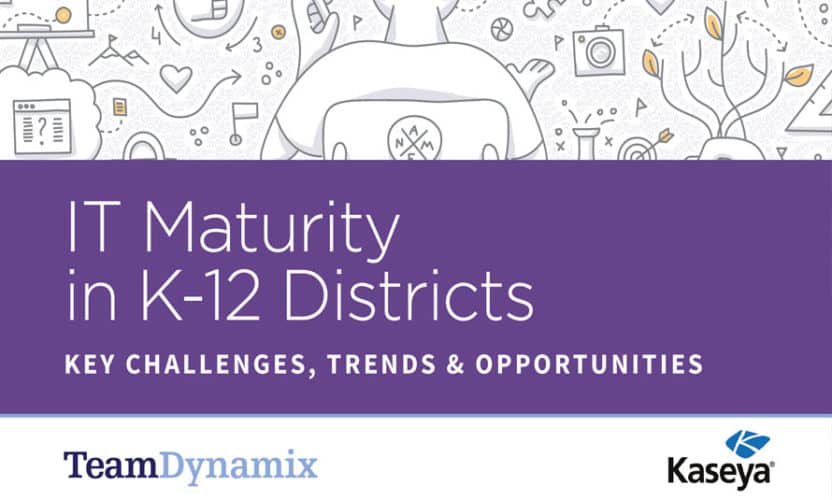In Part Four of our series for improving IT maturity in K-12 districts, we’re going to focus on how adopting the ITIL (Information Technology Infrastructure Library) framework can boost the efficiencies and effectiveness of your IT department.
In Part One of this series, we discussed how 45% of our survey participants cited resource constraints as their top challenge and how self-service is a key area of focus for resource optimization.
However, with 59% of participants ranking their ability to provide self-service on the low end of the IT maturity scale (levels 1 or 2), and 68% giving themselves three stars or fewer (out of 5) for their existing self-service portal—this is where ITIL comes into the picture.
44% of participants rank their IT service’s adherence to ITIL standards on the low end of the IT maturity scale. As a set of practices that imparts practical and strategic guidance for IT service management, the overall goal of ITIL is to improve the business service. The business service will be improved when its support system—the specialized capabilities of the process, people, suppliers, and technology—is optimized.
Here are four keys to building a solid foundation using ITIL:
- Categorize incidents and service requests by differentiating one from the other.
- Establish clear criteria for triaging incoming requests to determine their urgency, set reasonable resolution targets, and determine appropriate escalation protocols.
- Provide outstanding customer service by promoting a culture of courteous service, which fosters better relationships and congruent expectations.
- Hold IT accountable by using data to guide improvement strategies, spending time on projects rather than fighting fires, and fulfilling more service requests than responding to incidents.
Check back soon for future blogs that highlight the other areas K-12 districts should focus on to improve their IT maturity.
The TDX 2018 K-12 Pulse Study is now available and you can get your copy here!

